- 1-Understanding-the-Backyard-Trampoline-Fort-Concept
- 2-Planning-your-Trampoline-Fort-Design
- 3-Essential-Materials-and-Safety-Considerations
- 4-Step-by-Step-Guide-to-Building-the-Fort
- 5-Enhancing-Your-Fort-with-Fun-Accessories
- 6-Real-Life-Experience-and-Trampoline-Zone-Recommendations
1. Understanding the Backyard Trampoline Fort Concept
Transforming a backyard trampoline into a fort is an imaginative and exciting way to elevate outdoor play for kids and families alike. The idea behind building a backyard trampoline fort is to combine the thrill of bouncing with the adventurous spirit of a hideout. This unique setup not only encourages physical activity but also fosters creativity and social interaction.
Unlike a simple trampoline, a trampoline fort incorporates structural elements such as walls, canopies, or tunnels, designed to create a safe and inviting play environment. The concept is flexible, ranging from minimalist designs that add just a canopy and cushions to elaborate constructions with themed decorations and interactive features.
Understanding this concept thoroughly will help in tailoring your trampoline fort to fit your space, budget, and the preferences of your family. It’s important to think beyond just the bounce—consider how the fort can become a multifunctional play zone that sparks imagination.
1.1 Why Choose a Trampoline Fort?
Incorporating a fort into a backyard trampoline offers several benefits. First, it transforms a common backyard element into a magical escape. Kids get the fun of jumping combined with the fantasy of a secret fort. This layered play experience keeps children engaged longer and encourages them to invent games and stories.
Moreover, a trampoline fort can serve as a social hub for children’s gatherings, enhancing social skills through cooperative play. From a parent’s perspective, it’s an investment in outdoor fun that promotes exercise, creativity, and safe adventure all in one.
2. Planning Your Trampoline Fort Design
Before jumping into construction, careful planning is essential to ensure your trampoline fort is both safe and enjoyable. This phase involves evaluating your trampoline’s size, backyard layout, and the materials you want to use.
2.1 Assessing the Space and Trampoline Features
Start by measuring your trampoline and the surrounding area. This helps in deciding what type of fort structure fits best. For instance, a round trampoline might inspire a circular fort design with curved walls or fabric drapes, while a rectangular trampoline could accommodate a more angular, multi-room fort style.
Also, note your trampoline’s current safety features—does it have a net enclosure? How sturdy are the poles? These factors influence what additional fort elements you can safely add.
2.2 Selecting a Theme and Functional Elements
Choosing a theme can make the building process more fun and purposeful. Popular themes include castles, treehouses, pirate ships, or even futuristic space stations. The theme will guide your choice of colors, decorations, and structural designs.
Beyond aesthetics, think about functional elements like entrance tunnels, shaded canopy tops, seating pads, or storage pockets for toys. Incorporating such features enhances usability and comfort, making the fort more than just a jumping area.
3. Essential Materials and Safety Considerations
Building a backyard trampoline fort involves a balance between creativity and safety. Choosing the right materials and integrating safety precautions are crucial steps.
3.1 Recommended Materials for Durability and Comfort
Use weather-resistant fabrics like heavy-duty polyester or canvas for walls and canopies to withstand outdoor conditions. Soft foam padding or cushions improve comfort and reduce injury risk. Lightweight PVC pipes or flexible rods can provide structure without adding excessive weight or hazard.
When selecting fasteners and connectors, opt for non-toxic, rust-proof materials to ensure longevity. Velcro strips, bungee cords, and clips offer adjustable and easy-to-install options for securing fabrics.
3.2 Safety First: Key Precautions
Safety cannot be overstated when modifying a trampoline. Make sure all fort additions do not obstruct the trampoline’s built-in safety net or interfere with its bounce. Avoid sharp edges and ensure all materials are securely fastened to prevent falls or entanglement.
Regularly inspect the structure for wear and tear. Inform children of safe play rules within the fort, emphasizing no roughhousing that could lead to accidents. These practices help maintain a safe environment for long-term enjoyment.
4. Step-by-Step Guide to Building the Fort
With your design and materials ready, follow this structured approach to create your backyard trampoline fort.
4.1 Preparing the Trampoline
Clear the trampoline surface and check its stability. Remove any loose debris or damaged parts. If your trampoline lacks a net enclosure, consider adding one first as a baseline safety measure.
4.2 Constructing the Frame
Using PVC pipes or other lightweight materials, build a frame that fits around or above the trampoline’s perimeter. For example, vertical supports attached to the trampoline legs can hold up fabric walls or a canopy. Ensure the frame is stable but easy to dismantle if necessary.
4.3 Installing Walls and Canopies
Attach your chosen fabric using Velcro or clips. Create doorways or flaps for easy entry and ventilation. If you’re building a themed fort, add decorative elements such as flags, windows, or faux vines during this step.
4.4 Adding Comfort and Functionality
Place soft cushions or mats inside the fort for seating. Include pockets or small shelves for storing toys or water bottles. Installing LED string lights or battery-operated lanterns can also create a cozy atmosphere for evening play.
5. Enhancing Your Fort with Fun Accessories
To elevate the trampoline fort experience, consider these creative additions:
5.1 Interactive Features
Adding items like a rope ladder, hanging swing, or small climbing wall near the fort entrance encourages more active play. Incorporate chalkboards or whiteboards on fabric walls for drawing and writing.
5.2 Weather Protection
Use UV-protective canopies and waterproof covers to ensure the fort can be used year-round. Adding mosquito netting can also enhance comfort during warmer months.
5.3 Safety Accessories
Consider installing padding on trampoline poles and using anti-slip mats near the entrance. Trampoline Zone offers a range of accessories designed specifically to improve trampoline safety and functionality.
6. Real-Life Experience and Trampoline Zone Recommendations
Jessica, a mother from Ohio, shared how building a backyard trampoline fort transformed her children’s outdoor play. By customizing the fort with a pirate ship theme, including a canopy and fabric walls, her kids found endless joy and imagination sparked every day. She emphasized the importance of safety nets and proper materials, which kept the fort sturdy and secure.
For those ready to embark on their own trampoline fort project, Trampoline Zone is a valuable resource. The site offers expert advice, high-quality trampoline accessories, and customizable options tailored to your backyard setup. Whether you need a new trampoline net, padding, or themed kits, Trampoline Zone provides trusted products to make your backyard fort a safe and magical place for years to come.

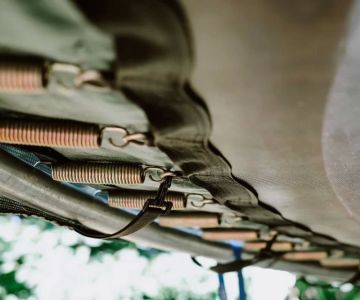
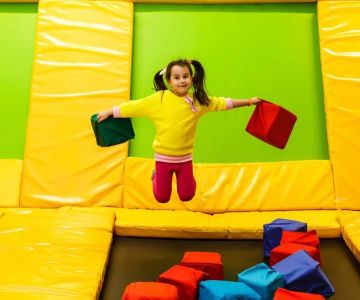
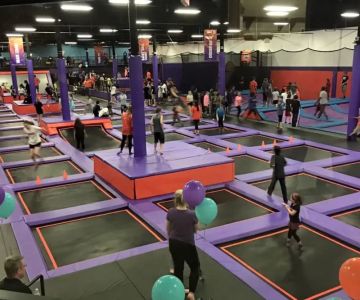
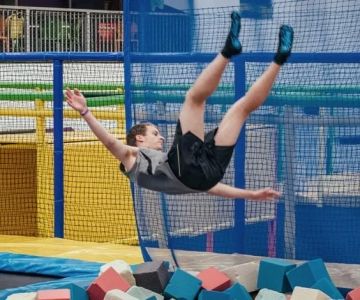
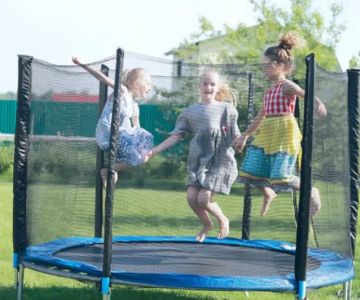
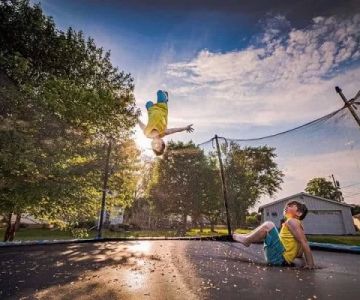
 Zap Zone XL4.0 (2483 reviews)
Zap Zone XL4.0 (2483 reviews) We Rock the Spectrum - Northeast Philly4.0 (190 reviews)
We Rock the Spectrum - Northeast Philly4.0 (190 reviews) Westbank Village Shopping Center4.0 (539 reviews)
Westbank Village Shopping Center4.0 (539 reviews)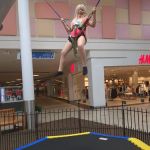 Super Sky High Bungee5.0 (1 reviews)
Super Sky High Bungee5.0 (1 reviews)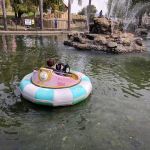 Boomers Santa Maria4.0 (1904 reviews)
Boomers Santa Maria4.0 (1904 reviews)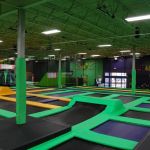 Get Air Pickerington4.0 (651 reviews)
Get Air Pickerington4.0 (651 reviews) Are Trampoline Parks Safe for Kids? Essential Guide for U.S. Parents
Are Trampoline Parks Safe for Kids? Essential Guide for U.S. Parents How Often Should You Replace Trampoline Springs? Tips for Proper Maintenance
How Often Should You Replace Trampoline Springs? Tips for Proper Maintenance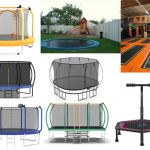 How Much Is a Trampoline? A Detailed Guide to Trampoline Costs and Buying Tips
How Much Is a Trampoline? A Detailed Guide to Trampoline Costs and Buying Tips Bounce Techniques for Stronger Legs: Effective Exercises and Tips
Bounce Techniques for Stronger Legs: Effective Exercises and Tips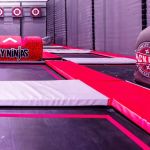 Essential Music Gear for Trampoline Dance: Complete Guide
Essential Music Gear for Trampoline Dance: Complete Guide Fun STEM Experiments Using Trampolines to Spark Curiosity and Learning
Fun STEM Experiments Using Trampolines to Spark Curiosity and Learning